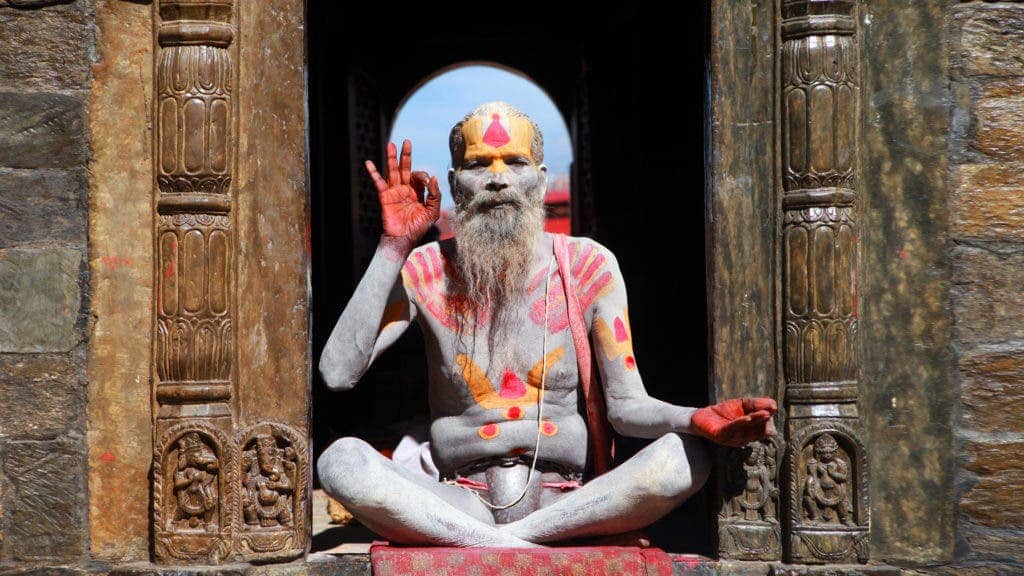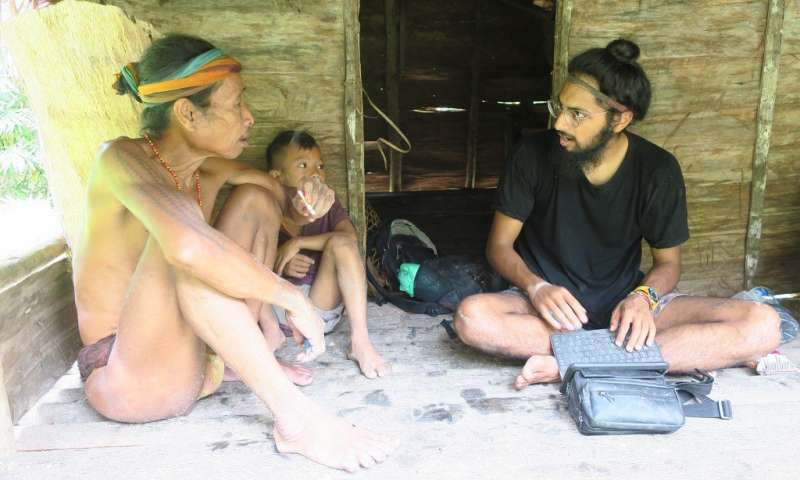Shamans and other magical-services providers may have been the first professional class in human history, new research reports.

Image via Goodfreephotos.
Medicine men, witch doctors, prophets, oracles, priests, shamans — these purveyors of magic can be found across the world’s cultures. Virtually every human society has at one point created such specialists, and they all use trances or other means to communicate with supernatural forces. Anthropologists, naturally, have long tried to explain why these individuals appear and why their habits are so consistent across cultural boundaries.
One new paper suggests that the answer lies, at least in part, in the way humans are wired to think about each other.
The gods speaketh through me
Manvir Singh, a graduate student in the Department of Human Evolutionary Biology in the Graduate School of Arts and Sciences at Harvard University argues that shamanism emerges as specialists competed to offer magical services to communities. Much in the same way that economies today work, the competition between these actors led to a set of traditions (i.e. regulations) on the supply. However, being culturally rather than legally enforced (and also religious rather than secular), such regulations weren’t particularly good at ensuring honest service.
They were, however, very good at hacking human psychological biases and making people think the shamans could deliver, Singh explains.
“The theory is that there are important things we really want to have control over—calling rain, summoning animals, healing illness,” he said. “All around the world, people believe that these important, uncertain outcomes are influenced by invisible forces—gods, witches, their ancestors, fairies, and more.”
“But a shaman says, ‘I can control that. I can talk to fairies. I can see signs of witches. I can be possessed by a god or speak to them.'”

Image credits Manvir Singh.
Singh first had to address an issue that has eluded anthropological definition for quite some time: what exactly is a shaman? To this end, he interviewed members of the Mentawai tribe (in Indonesia). In the most general sense, “a shaman is a person in a group who enters a type of trance — a very foreign behavioral and psychological state — to provide services to a community,” he explains. He does accede that it’s a “hugely debated and contested idea” due to the wide range of cultures across the globe.
Those services can range from healing to fighting evil spirits to telling the future or controlling the weather, but they’re always magical in nature. The key, however, is to make people trust that the shamans have these abilities, and this is where psychology comes into play.
Such specialists virtually always paint themselves as something apart from or more than human. The transformation can be permanent (induced or through birth) or temporary (for example, dancing for several hours to enter exhausted trance states). This difference is what gives rise to a shaman’s (alleged) abilities and it’s also what convinces people that they have these abilities.
“There are several lines of research that show people believe other people have different powers when those people diverge from humanity,” Singh said.
“One great example of this is the superhero narrative. In those stories, the reader has to believe this person has powers normal humans don’t, so the writers often include an origin myth—this person was bitten by a radioactive spider, or they have some genetic mutation, or they’re actually an alien.”
By claiming that they are different in some way to humans, be it biologically or physiologically, they become a “different kind of human.” It’s thus easier to believe them able to engage with supernatural forces.
This delineation is also why shamans were the first professional class in human societies, Singh adds. In short, one couldn’t become a shaman without undergoing a certain transformation — thereby segregating into a class of people who have been transformed and those who had not. Think of higher education today: one can’t become a medic, for example, without first being transformed (through medical school) and getting a degree.
It is actually surprisingly different from how every other profession functioned in early societies. If someone was good at making bows, for example, he could just start making bows. There was no social barrier preventing him from bowmanship.
“Meanwhile for shamans, it quickly develops into a system where, to become a shaman, you have to undergo a transformative ritual—there are these entry requirements,” Singh said.
“This creates a separate class of individuals where there is an entry requirement, and where they have near-exclusive jurisdiction over these services.”
Singh says that shamanism emerged virtually everywhere but exhibited very particular features in each case. Going forward, he plans to explore how the shamans’ alleged magical powers translate into real power on their communities. He’s also interested in understanding why other near-universal cultural practices develop, including music and belief in witchcraft.
The paper “The cultural evolution of shamanism” has been published in the journal Behavioral and Brain Sciences.


